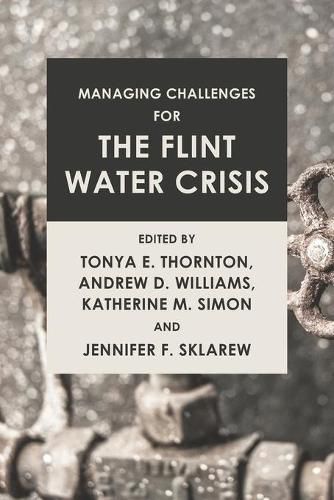Readings Newsletter
Become a Readings Member to make your shopping experience even easier.
Sign in or sign up for free!
You’re not far away from qualifying for FREE standard shipping within Australia
You’ve qualified for FREE standard shipping within Australia
The cart is loading…






The field of emergency and crisis management covers countless natural and human-induced hazards as well high threats. Focusing events occur at every level of governance; however, it is at the local level in which the ‘rubber’ response efforts meets the proverbial ‘road.’ While politicians and policymakers typically attempt to reduce the impacts associated with disasters by anticipating the unexpected, many challenges remain. Understanding disaster meaning, even causality, is essential to the problem-solving process.
While the resources of local governments are shrinking, expectations for delivering real-world results are greater than ever before. In the water crisis of Flint, Michigan, decision-makers believed to be making sound choices by changing the treated water source from the Detroit Water and Sewerage Department– water that was sourced from Lake Huron and the Detroit River–to the Flint River. Since the water from Flint River was contaminated, and officials failed to apply corrosion inhibitors to the water, it resulted in an environmental water quality disaster; that is, exposing 100,000 residents to elevated levels of lead.
This edited volume examines several public management and intergovernmental failures, with particular attention on social, political, and financial impacts. The editors come from a variety of backgrounds, including a pracademic, an academic connected with communities of practice, a local government expert, an emergency management professional, and an environmental policy scholar. The collection of chapter authors includes professional colleagues and experts from the social sciences, public administration, emergency and crisis management, and environmental policy fields, most of which are affiliated with the key professional association, the American Society for Public Administration.
$9.00 standard shipping within Australia
FREE standard shipping within Australia for orders over $100.00
Express & International shipping calculated at checkout
The field of emergency and crisis management covers countless natural and human-induced hazards as well high threats. Focusing events occur at every level of governance; however, it is at the local level in which the ‘rubber’ response efforts meets the proverbial ‘road.’ While politicians and policymakers typically attempt to reduce the impacts associated with disasters by anticipating the unexpected, many challenges remain. Understanding disaster meaning, even causality, is essential to the problem-solving process.
While the resources of local governments are shrinking, expectations for delivering real-world results are greater than ever before. In the water crisis of Flint, Michigan, decision-makers believed to be making sound choices by changing the treated water source from the Detroit Water and Sewerage Department– water that was sourced from Lake Huron and the Detroit River–to the Flint River. Since the water from Flint River was contaminated, and officials failed to apply corrosion inhibitors to the water, it resulted in an environmental water quality disaster; that is, exposing 100,000 residents to elevated levels of lead.
This edited volume examines several public management and intergovernmental failures, with particular attention on social, political, and financial impacts. The editors come from a variety of backgrounds, including a pracademic, an academic connected with communities of practice, a local government expert, an emergency management professional, and an environmental policy scholar. The collection of chapter authors includes professional colleagues and experts from the social sciences, public administration, emergency and crisis management, and environmental policy fields, most of which are affiliated with the key professional association, the American Society for Public Administration.